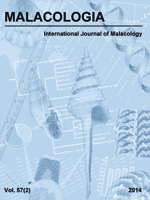This project was conducted to determine if chromosomal characteristics can provide information useful in systematics of the naiades (Bivalvia: Unionida). A field-compatible slide preparation technique was perfected to the point that a few chromosome spreads could be expected from most processed animals. Chromosome slides were prepared from 250 naiades collected in ten of the east-central and southeastern United States, the western state of Oregon, and Manitoba Province, Canada.
The 65 species of North American naiades for which chromosome numbers were determined during this project (64 members of the family Unionidae and one member of the family Margaritiferidae) all have a diploid number of 38 chromosomes. This number is identical to reported diploid numbers for the 11 European and seven of the eight Asian unionid and margaritiferid species that have been studied, strongly suggesting that 38 is the diploid number present in the largely Northern Hemisphere superfamily Unionoidea. In the other unionid superfamily, the Etherioidea, the three Australian and one South American hyriid naiades that have been studied all have 34 diploid chromosomes, while the single studied African iridinid species has 20 chromosomes. If this difference in chromosome numbers is substantiated as more, especially Southern Hemisphere species are studied, this straight-forward morphologic character could become important in recognizing distinctions between high-level groups of naiades.
An analysis of chromosomal morphology focused on two metrics: Arm Ratio (r) and Relative Length (RL). When considered together, these two virtually independent metrics sort the chromosomes into similar-size and similar-shape groups that can facilitate comparisons between species. Analysis of the suggested karyotypes for these two metrics and the detailed karyotypes of their interaction demonstrates the similarity of two species in the same naiad genus and the substantial dissimilarity of two species in different naiad tribes. Analysis of the r and RL metrics for ten species and an all-inclusive composite demonstrates that karyotypic data can recognize similarities and differences among naiad species that correspond with results from other morphologic and genetic character sets.





